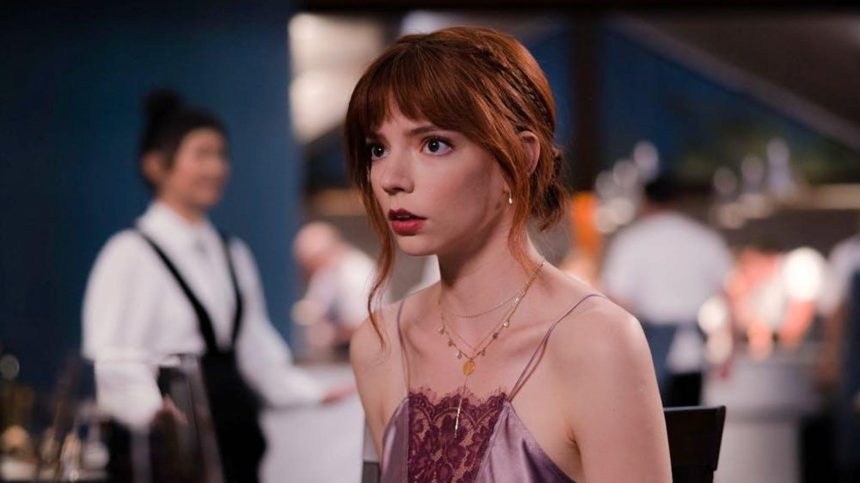A Culinary Masterpiece of Dark Humor and Suspense: Delving into the World of "The Menu"
"The Menu," a 2022 film currently gracing the upper echelons of Netflix’s trending list, presents a captivating blend of dark comedy, suspense, and social commentary, all wrapped within the confines of an exclusive, high-end dining experience. While its premise, a couple visiting a remote island restaurant, might sound deceptively simple, "The Menu" transcends the mundane and serves up a cinematic feast that is both disturbing and thought-provoking.
Starring a stellar cast led by the increasingly prominent Nicholas Hoult and Anya Taylor-Joy, with the incomparable Ralph Fiennes as the enigmatic chef, the film unfolds with a creeping sense of unease. The lavish menu, meticulously crafted by Chef Julian Slowik (Fiennes), becomes a canvas for exploring themes of obsession, class disparity, and the pursuit of artistic perfection. What begins as a showcase of culinary artistry quickly transforms into a meticulously orchestrated descent into madness, revealing the chef’s disillusionment with his demanding clientele and his own artistic aspirations.
"The Menu" defies easy categorization. While elements of horror and comedy intertwine throughout, it transcends these labels, carving its own unique niche within the cinematic landscape. Its closest relatives might be found in films like "Pig," with its exploration of artistic passion gone awry, or "The Invitation," with its escalating tension and underlying sense of dread. However, even these comparisons fall short of capturing the film’s singular essence. Like "Midsommar," the film builds its atmosphere slowly, creating an atmosphere of disquiet that permeates every scene.
The film’s brilliance lies in its ability to balance dark humor with genuine suspense. The absurdity of the situation, the outlandish behavior of the guests, and the chef’s increasingly erratic pronouncements generate a darkly comedic undercurrent. Yet, beneath the surface of satire lies a palpable sense of danger, a growing realization that this meticulously planned evening will have unforeseen and potentially tragic consequences.
The performances are uniformly excellent. Fiennes imbues Chef Slowik with a chilling intensity, capturing the chef’s descent into obsession with chilling precision. Hoult excels as Tyler, a self-proclaimed foodie whose blind devotion to the culinary arts borders on the pathological. Taylor-Joy, as Margot, provides a grounded perspective, her skepticism and outsider status offering a counterpoint to the other diners’ unquestioning acceptance of the chef’s eccentricities.
The intricate narrative structure of "The Menu" is another of its strengths. The film unfolds in a series of courses, each dish revealing another layer of the chef’s twisted worldview and the dark secrets of his guests. The meticulously plated dishes become symbolic representations of the characters’ flaws and vulnerabilities, transforming the dining experience into a macabre performance art piece.
While "The Menu" may not be for everyone, its unique blend of dark humor, social commentary, and suspense makes it a compelling and thought-provoking film. It is a film that lingers in the mind long after the credits roll, prompting reflection on the nature of art, the corrosive effects of obsession, and the often-absurd dynamics of class and privilege. For those who appreciate the unconventional and the unsettling, "The Menu" offers a cinematic feast unlike any other.
A Deep Dive into the Gastronomic Nightmare of "The Menu"
"The Menu" is not a conventional horror film, nor is it a straightforward comedy. It occupies a unique space, blending elements of both genres with a dash of thriller and a generous helping of social commentary. The film’s strength lies in its ability to unsettle the viewer, creating an atmosphere of mounting dread while simultaneously eliciting uncomfortable laughter. This delicate balancing act, maintained throughout the film, keeps the audience guessing until the very end.
The isolated setting of the Hawthorne restaurant, a meticulously designed haven of culinary excellence located on a private island, further enhances the sense of unease. The remoteness of the location, coupled with the chef’s absolute control over the environment, creates a sense of claustrophobia and inescapable doom. The guests, trapped on this island with no apparent means of escape, become unwitting participants in the chef’s twisted game.
The film’s commentary on class and privilege is particularly incisive. The guests, a collection of wealthy elites, represent a cross-section of societal archetypes: the entitled tech bros, the jaded food critics, the aging movie star clinging to past glories. Each character embodies a specific aspect of societal excess, and their interactions reveal the shallowness and self-absorption that often accompany wealth and privilege. Chef Slowik, through his meticulously crafted menu, exposes the hypocrisies and vulnerabilities of his clientele, turning their own pretensions against them.
The symbolism woven throughout the film adds another layer of complexity. Each dish served is not merely a culinary creation but a symbolic representation of the chef’s growing disillusionment and the guests’ hidden flaws. The food becomes a weapon, a means of exposing the rot beneath the gilded surface of their lives. The meticulous preparation and presentation of each course further emphasize the chef’s obsessive nature and his desire for control.
The performances are a key ingredient in the film’s success. Ralph Fiennes delivers a masterclass in controlled menace, portraying Chef Slowik as a man consumed by his own artistic ambitions and driven to extremes by the hollowness of the world he inhabits. Anya Taylor-Joy provides a much-needed anchor of sanity amidst the escalating chaos, her character representing a refusal to be seduced by the chef’s manipulative rhetoric. Nicholas Hoult’s portrayal of the obsessive foodie is both comical and unsettling, highlighting the dangers of unchecked devotion.
"The Menu" is a film that demands attention and rewards careful viewing. It’s a film that will stay with you long after the final credits roll, prompting reflection on the complexities of human behavior, the seductive power of art, and the often-perilous pursuit of perfection. It’s a cinematic experience that is as unsettling as it is delectable, a true culinary nightmare that will leave a lingering aftertaste.
"The Menu": A Deconstruction of Artistic Obsession and the Cult of Celebrity
"The Menu" isn’t just a darkly comedic thriller; it’s a sharp critique of the cult of celebrity and the often-destructive nature of artistic obsession. The film examines the complex relationship between the artist and the audience, exploring the ways in which artistic endeavors can become corrupted by the demands of the market and the pressures of fame. Chef Slowik, initially driven by a passion for his craft, becomes increasingly disillusioned with the superficiality of the culinary world and the insatiable appetites of his wealthy clientele. His meticulously planned menu becomes a twisted form of artistic expression, a final act of rebellion against the forces that have eroded his passion.
The film also delves into the dynamics of power and control. Chef Slowik, within the confines of his restaurant, wields absolute authority. He controls every aspect of the dining experience, from the carefully curated menu to the orchestrated interactions between his staff and the guests. This power dynamic reflects the often-unequal relationship between artists and their patrons, where the artist’s creative vision can be compromised by the demands of those who hold the purse strings.
The setting of Hawthorne restaurant is more than just a backdrop; it’s a character in itself. The restaurant’s isolated location, its meticulously designed interior, and the rigidly structured dining experience all contribute to the sense of unease and creeping dread. The isolation of the island becomes a metaphor for the chef’s detachment from reality, his descent into a self-created world of culinary obsession.
The film’s ending, while ambiguous, reinforces the film’s central themes. Chef Slowik’s final act is not just a culinary masterpiece; it’s a statement, a



